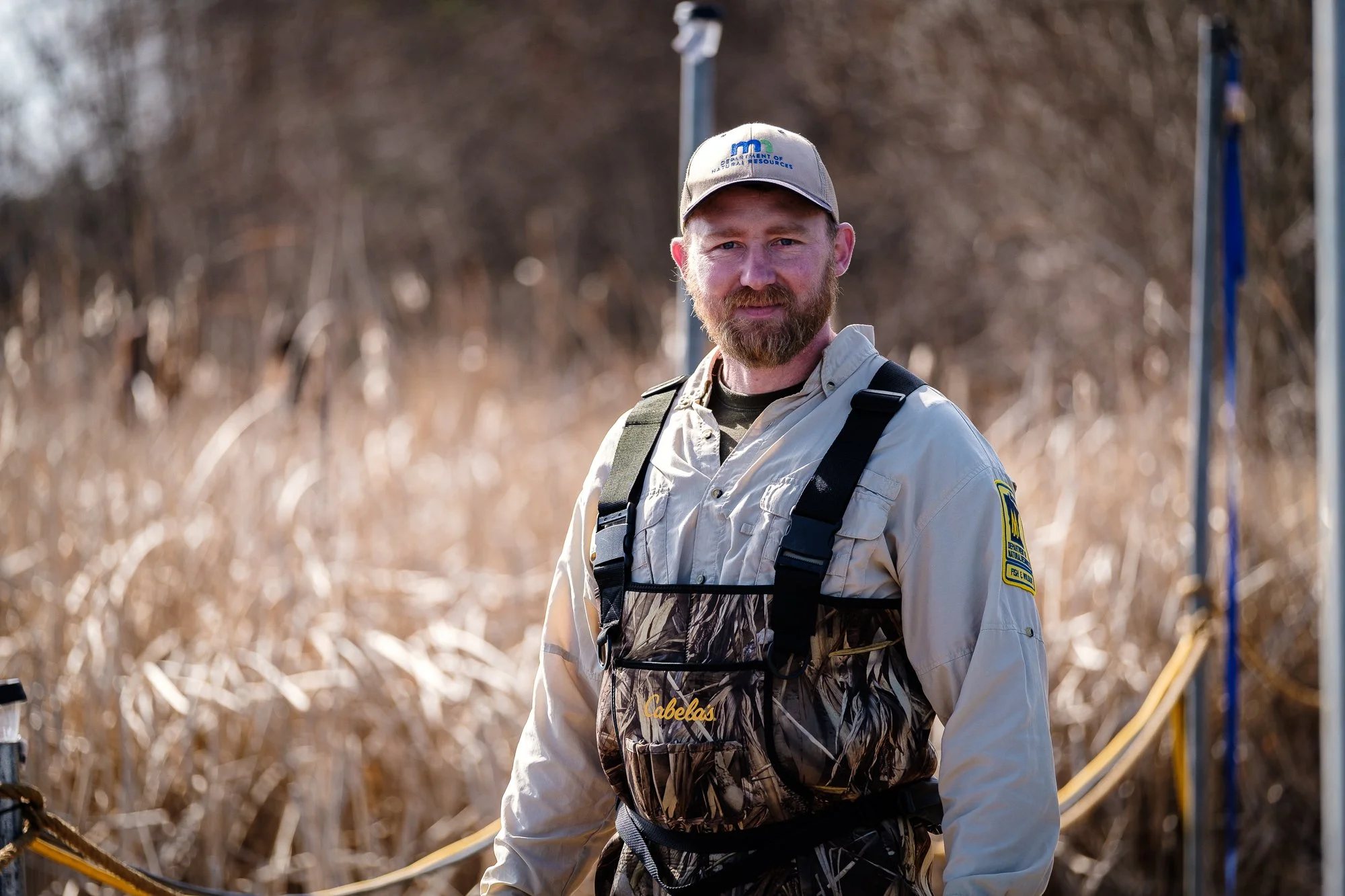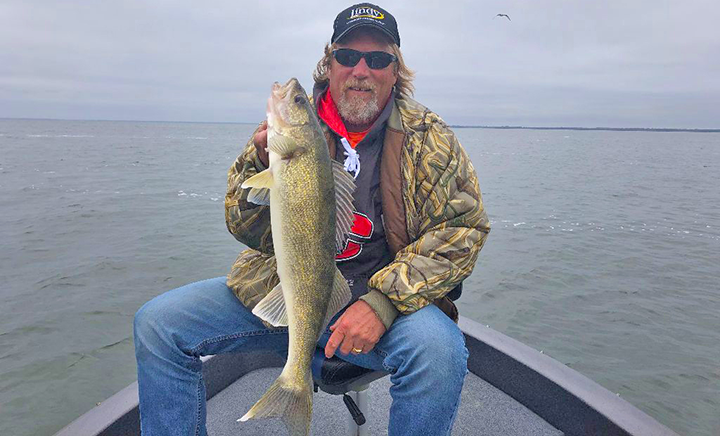After a recent cold snap brought surface temperatures down into the 59 degree range, walleyes on Winnie showed signs of starting a full scale migration toward Cutfoot. Fish were found following traditional routes such as the shoreline breaks from Stony Point headed east and heading west along the Mississippi River channel through Tamarack Bay. Highbanks, another traditional fall shoreline pathway for walleye began heating up as well.
Mike & Lisa Lindholm with nice Winnie Walleyes!
This week, warm air temperatures and lots of sunshine warmed the surface water. By Wednesday afternoon, 62 to 63 degree readings were the norm and there was an algae bloom developing on the surface. The warmer, calmer, conditions did not seriously impact angler’s ability to catch walleyes, but they did appear to temporarily stall out any full scale exodus from Winnie into Cutfoot.
With plenty of food, adequate cover and comfortable water temperatures, many of the fish simply held position wherever they were at the time of the warm-up. Shoreline related drop offs and weed edges still hold good numbers of walleye. Others though, staged a retreat back into deeper water and were found on slow tapering flats and shoreline breaks leading into the lake’s deep water.
On the shoreline, fish move shallower when there’s a breeze, deeper when it’s calm. Key depths are 8 to 10 feet typically, but never leave an area with first searching the 6 to 8 foot breaks, as well as the 10 to 14 foot ones. Fish also move up and down in response to angling pressure. So if you’re the first one to arrive in an area, start your search shallower. If you arrive late to a party of other anglers, be the one who checks the deeper breakline first.
Some of our anglers have reported catching fish on the lakes larger bars. Key depths range from 18 to 26 feet and when found, the fish are gathered in larger schools. Their attitudes are positive and they have been willing to bite, but these larger schools of fish appear to be producing fewer “keeper” size walleye.
To us, the keeper would be a suggested 14 inch minimum (for 2020), in 2021, we may suggest raising the bar. Right now, it is the availability of fish that dictates which sizes might be harvested. Right now, 14 inches is about the best we can expect from the lake on most days, that’s just where we are in the development of 2018 year class fish. But if the fish populations and growth rates follow the expected trajectory, 2021 will offer anglers the chance to be much more selective.
We would love to see the great fishing continue and we will do our best to help guide you in the decision making process. Hopefully with an eye cast toward not only providing great opportunity for harvesting fish to eat, but also preserving opportunities for as long as possible; more on that later.
Fall Colors North Shore Lake Winnie
Presentations are simple, jig and minnow combinations will produce plenty of walleye. Perch and pike will come along in the mix as well. For most, 1/8 ounce size jigs have been the mainstay, use ¼ ounce when fishing the deeper, main lake bars. Blue-glow, chartreuse-green, orange and glow-perch have been reliable colors. Minnow supplies have been spotty, but when you can get them, larger fatheads, rainbows and shiners are best. The size of the minnow is what’s important; spend a little extra if you can get minnows in the 3-4 inch size range.
The fall crappie patterns are slow to settle in this year. Angler’s reports are sporadic, some find action in deep water, some locate fish in the weeds and many … do not find them at all. It is hard to say if and when panfish action will really fire up in Cutfoot or Little Cutfoot, but we are keeping tabs on developments.
We are close to, or at the peak of fall color right now. The leaves, particularly around Cutfoot, are spectacular. The loons are gathering on the big lake too, a trip to the middle of Winnie on a calm day will lead you to a great photo opportunity. All this, combined with good fishing, makes this a time to savor. Get outside and get your fill now because this time of the season never lasts long enough.















